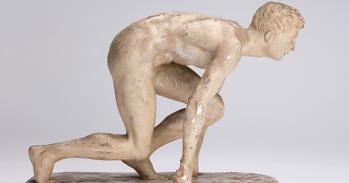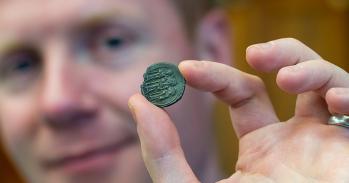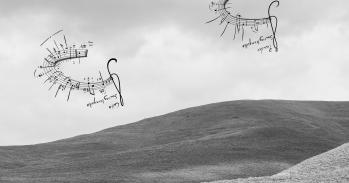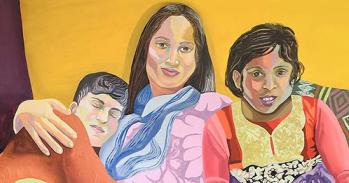Seventy years after Hitler’s soldiers were driven from Paris, Cambridge University Library is staging the first-ever exhibition to examine the outpouring of literary works that followed the German retreat from French soil.
Seventy years after Hitler’s soldiers were driven from Paris, Cambridge University Library is staging the first-ever exhibition to examine the outpouring of literary works that followed the German retreat from French soil.
There’s no collection like this in France or anywhere else.
Charles Chadwyck-Healey
Opening tomorrow (May 7), Literature of the Liberation: The French Experience in Print 1944-1946 has been assembled from the unique collection of more than 600 books, cartoons, magazines, photographs and gramophone records donated to Cambridge by collector Sir Charles Chadwyck-Healey.
After four years of occupation, Paris was liberated on August 25, 1944. Virtually straight away, writers, artists, photographers and film-makers tried to capture what the experience had been like. Although a large amount of scholarly and historical attention has been paid to works produced during France’s occupation, Chadwyck-Healey said the University Library exhibition is the first to look at the literary landscape in the aftermath of liberation.
“There’s no collection like this in France or anywhere else,” he said. “This is the first time there has ever been an exhibition solely devoted to the literature of this tumultuous period.
“The days, weeks and months following liberation were such an extraordinary time for people in France. Occupation and liberation were cataclysmic events in French history. They had to deal with the scars of overwhelming defeat, living with the Germans, and then having the Allies sweeping through the country. All this had a profound effect on the national psyche.
“Much of the collection is about shame, but the most surprising thing is the sense of humour, irony and self-deprecation. After liberation, from the very first moments of freedom, there was an extraordinary outpouring of material.”
Chadwyck-Healey’s fascination with the period has seen him amass a huge collection of books and related material since 2001. He estimates there to be around 2,600 books published in the period examined by the exhibition.
“There are many still to be found and we continue to add to the collection to make it as complete as possible” he said. “It is a research collection, and I donated it to Cambridge University Library so that scholars and students can have access to it. There are books by Sartre, Camus and Cocteau, but the majority are by French men and women about whom very little is known.”
Besides the written accounts, the most moving exhibits for many visitors will be the portraits of inmates of Buchenwald made by the artists who were there as fellow prisoners. Three professional artists - Auguste Favier, Pierre Mania and Boris Taslitzky - were active in Buchenwald at the same time and managed not only to get materials to draw and paint, but to keep their work secret from their captors (111 drawings in the case of Taslitzky) until they could be published after the end of the War.
Literature of the Liberation, which is free to the public and runs until October 11, 2014, will be opened by the French Ambassador to London, Bernard Emié, at a launch event on May 6 (see media invite). The exhibition is divided into 12 distinct sub-headings including Fallen Heroes, The Liberation of Paris and Prisoners’ Books.
His Excellency Monsieur Emié said: “I welcome this opportunity to recognise the longstanding links between French history and literature and the collections of the University Library. From its Francophone medieval manuscripts, through its rich holdings of books relating to Montaigne and Rousseau, to this new collection on the Liberation, Cambridge University Library has established itself as a major centre for the study of France’s contribution to world culture.”
University Librarian Anne Jarvis said: “We are delighted to put on display highlights from the Chadwyck-Healey Liberation Collection, in this year of the seventieth anniversary of the liberation of Paris. Sir Charles’s flair and determination as a book-collector have produced a critical resource for the study of this important era of twentieth-century history, and his magnificent gift of the collection underlines the continuing importance of donations – both private and corporate – to the Library’s mission of keeping the University at the cutting edge of research.”
The text in this work is licensed under a Creative Commons Licence. If you use this content on your site please link back to this page. For image rights, please see the credits associated with each individual image.

![Libération de Paris by I. Blanchot, [1945]. Illustrations by Pierre Albert Leroux.](https://www.cam.ac.uk/sites/default/files/styles/slideshow/public/aout_1944_small.jpg?itok=OOlLG-Nf)

![Les volontaires du général Larafale by Marguerite Chabay, [1945].](https://www.cam.ac.uk/sites/default/files/styles/slideshow/public/chabay_volontiers_cover_small.jpg?itok=yJusK15W)


![Gala au profit des architectes prisonniers et déportés, [1945]. Lithograph by Valentine Hugo.](https://www.cam.ac.uk/sites/default/files/styles/slideshow/public/gala_au_profit_small.jpg?itok=uwCyl_n0)

![Le chant de la libération: le chant des partisans by Anna Marly with words by Maurice Druon and Joseph Kessel, [1945]. Sheet music cover.](https://www.cam.ac.uk/sites/default/files/styles/slideshow/public/le_chant_de_la_liberation_small.jpg?itok=mP07A_v0)
![Livre noir, 1939-1945 by Jean-Louis Chancel, [1945]. ‘Le chemin de croix’, from the set of 30 plates by the author.](https://www.cam.ac.uk/sites/default/files/styles/slideshow/public/livre_noir_swastika_small.jpg?itok=dA7FdT4k)
![Paris délivré par son peuple, [1944]. Cover by Pierre Boucher.](https://www.cam.ac.uk/sites/default/files/styles/slideshow/public/paris_delivre_small.jpg?itok=ZvNqPuNS)





